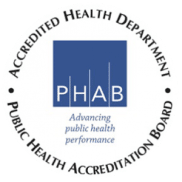(Little Rock, Ark.) – National Lead Poisoning Prevention Week (NLPPW) highlights the many ways
parents, caregivers, and communities can reduce children’s exposure to lead and prevent its serious
health effects. To raise awareness of childhood lead poisoning prevention, the Arkansas Department of
Health (ADH), the Centers for Disease Control and Prevention (CDC), the U.S. Environmental Protection
Agency (EPA), and the U.S. Department of Housing and Urban Development (HUD) are participating in
NLPPW on October 20-26.
The ADH will be participating in multiple activities in Arkansas throughout the week. To learn more about
lead exposure, visit ADH’s Lead-Based Paint program at the following events in support of NLPPW:
- Thursday, Oct, 24: Big Boo!seum Bash, Witt Stephens Jr. Nature Center, Little Rock, 5:30 p.m. –
8:30 p.m. - Saturday, Oct. 26: Arkansas Minority Health Commission & Sebastian County NAACP Community
Health Fair, St. James Missionary Baptist, Fort Smith, 10 a.m. – 2 p.m.
Lead has been banned in the United States in paint and gasoline since the 1970s. It is toxic to the human
body, especially in young children. Exposure to lead can result in lead poisoning, which occurs when lead
enters the bloodstream and builds up to toxic levels. It is especially dangerous for children six years old
and younger as their bodies are still developing and growing rapidly. The effects from lead poisoning
during early childhood development can be severe. Even in small amounts, lead can cause damage to the
brain and nervous system, which can result in learning and behavior problems, delayed growth and development, as well as other health-related problems. Some of these effects may persist beyond
childhood. For pregnant women, harmful effects include premature births, smaller babies, and miscarriage. There is no safe level of lead exposure.
Despite the continued presence of lead in the environment, lead poisoning is preventable. The key is
preventing children from coming into contact with lead. In 2023, there were 277 children in Arkansas
reported to have an elevated blood lead level.
A common source of lead exposure is from deteriorated lead-based paint, which was used inside and
outside many homes built before 1978 and in other buildings and steel structures, which may be nearby or adjacent to homes. According to the CDC, 3.3 million American households with children under 6 years old have lead exposure hazards from lead in deteriorated paint, dust, or soil. Children can also be exposed to lead in drinking water, take-home exposures from a workplace, lead in soil, and from some metal toys or toys painted with lead-based paint. A simple blood test may be able to help prevent permanent damage from occurring.
The NLPPW theme, “Bright futures begin lead-free” underscores the importance of learning how to prevent lead poisoning as well as testing your home and your child.
Parents can reduce a child’s exposure to lead in many ways. Here are some simple ways to protect your
family:
- Get the Facts: Find out about the hazards of lead. The Arkansas Department of Health (ADH) can provide you with helpful information about preventing childhood lead poisoning. Contact them at 501-671-1472 or review the ADH Lead-Based Paint program website here.
- Get Your Child Tested: A blood test is the best way to find out if a child has lead poisoning.
Consult your doctor for advice on testing your children. - Get Your Home Tested: Find out how to minimize risks of lead exposure by hiring a certified
professional to test older homes for lead. Water pipes in some older homes may contain lead
solder where lead may leach out into the water. Learn more about lead in drinking water here.
The only way to fully rid a pre-1978 home of lead is to remove it. Abatement should always be done by a
state-certified contractor. Abatement involves the removal of lead-based paint and dust-lead hazards; the
permanent covering or encapsulation of lead-based paint; the replacement of parts or fixtures painted with lead-based paint; and the removal or permanent covering of soil-lead hazards, as well as all set-up,
cleanup, disposal, and post-abatement clearance testing actions linked to such measures. For a list of
Arkansas lead accredited companies and personnel, please visit the ADH Lead-Based Paint program
website.
Owners of homes built prior to 1978 who do not wish to fully abate, or remove, lead hazards should be
careful when disturbing lead-based paint. Homeowners should only hire federally-certified Renovation,
Repair and Painting (RRP) program contractors, to make sure that the work is done in a lead-safe way.
This protects people living in the home from hazards connected with renovation, repair and painting. Done in the wrong way, these activities can create harmful leaded dust when lead paint is disturbed.
Further steps you can take to reduce exposure are:
- Wash your child’s hands before meals and after playing outside.
- Provide your child with meals and snacks that are high in iron, calcium and vitamin C.
- Frequently wash toys, pacifiers and other items your child uses regularly.
- Use wet methods to clean, including dusting and mopping.
- Have your family members leave their shoes outside the door.
- Ensure that any home renovation and maintenance work is done in a lead-safe way.
For more information, contact the Lead-Based Paint program at 501-671-1472 or contact the National
Lead Information Center at 1-800-424-LEAD.


